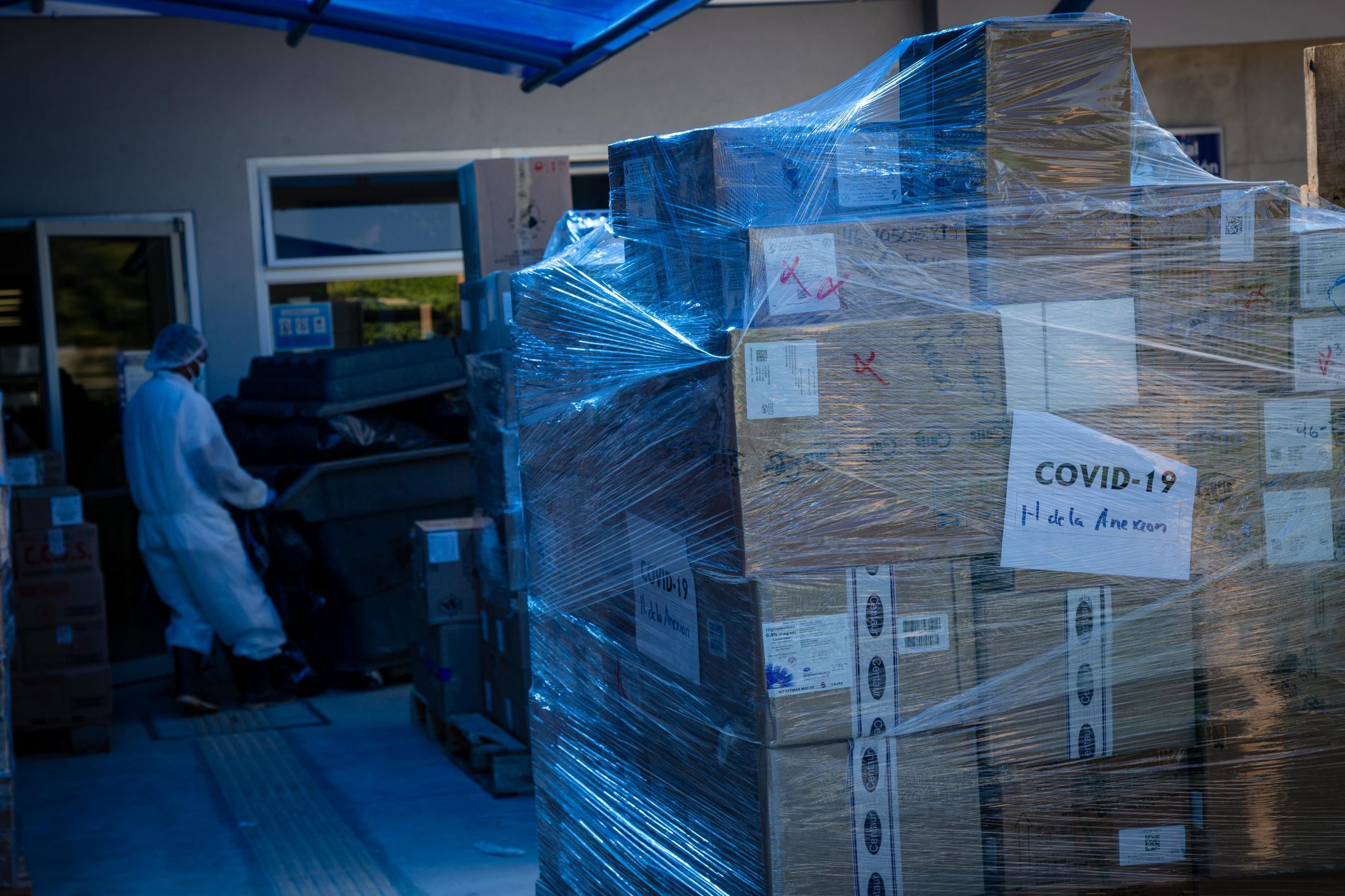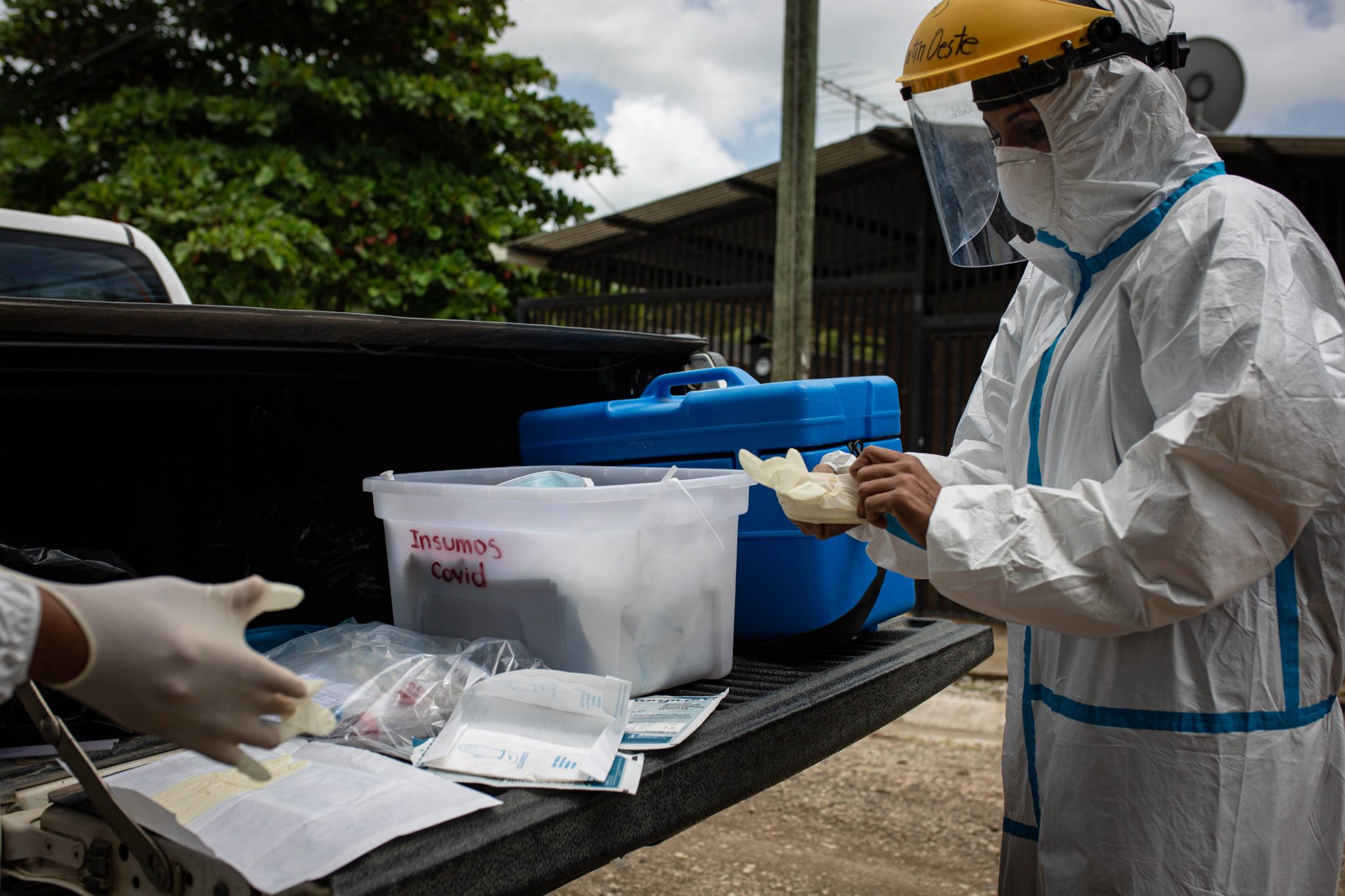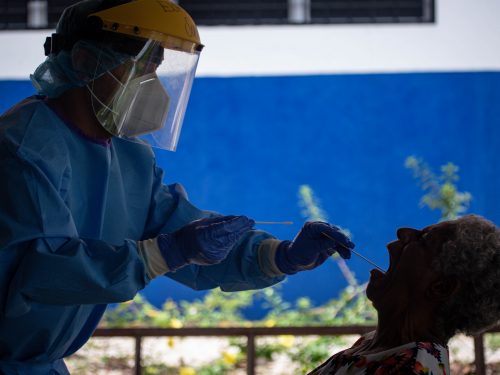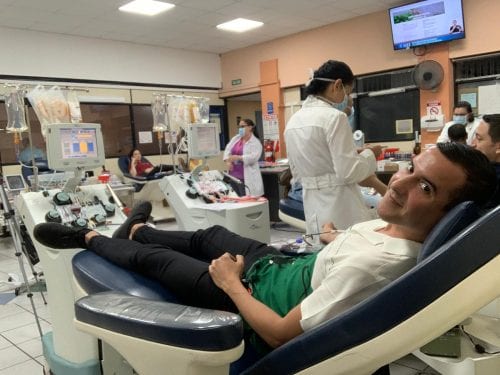
La Anexión Hospital in Nicoya and Enrique Baltodano Hospital in Liberia are already operating under the dual mode of hospitalizing patients with COVID-19 in addition to giving care for other diseases that they usually handle. On some days during September, they even exceeded the capacity of beds set up to care for COVID cases.
Given the situation, the hospitals are following a plan to increase the COVID units, but authorities haven’t ruled out the possibility that, despite the measures, full capacity could be reached soon nationally and regionally.
Pressure due to the increase in infections led the Costa Rican Social Security Fund (CCSS) to gradually enable regional and peripheral hospitals to care for patients with COVID, even though the institution’s initial strategy was to group these patients together in the national medical centers (Ceaco, Mexico, San Juan de Dios and Calderon Guardia).
“We are going to hold a meeting with the directors today, but San Carlos, Puntarenas, Perez Zeledon and Limon are starting to be dual hospitals,” said CCSS’s medical manager, Mario Ruiz, during the September 11 press conference.
Although Ruiz did not announce the Liberia and Nicoya hospitals on that list, both have hospitalized COVID patients since April and early September respectively, explained the hospitals’ directors and the regional COVID-19 coordinator, Bismarck Villegas.
According to the current strategy, the Nicoya hospital takes in mild or moderate patients and transfers critical cases to San Jose. Most of those currently hospitalized contracted the virus through an outbreak within the hospital.
Liberia’s hospital, on the other hand, has staff and equipment to treat mild, moderate, critical and intensive care cases since this medical center does have intensivists (doctors who specialize in treating seriously ill patients hospitalized in intensive care units).
Some patients are transferred to the central valley, as long as they are in a condition to be transferred,” said the hospital director, Marvin Palma. “But if they aren’t in condition and they are very critical, it’s better to leave them here and they are seen by the intensivist,” he added.
Capacity at Limit
Since the beginning of the pandemic, the hospitals have designated areas for caring for confirmed or suspected COVID-19 patients.
The dual mode lays out a plan for hospitals to increase spaces in their COVID units. This task is already underway, according to Villegas, but it will also have a limit in beds, equipment and personnel.
“[Guanacaste’s hospitals] have been at maximum capacity, but that is fluctuating. At some point they are very full and as some recover, some are discharged, some beds are freed up and the next day, due to the dynamics of the pandemic itself, they fill up again,” Villegas related.
The Nicoya hospital went from the six beds that it prepared when the national emergency began, to 12 and now to 16, with the possibility of reaching a maximum of 32 beds.
“We already have the 32 beds available,” the director of the Nicoya hospital, Anner Angulo, told The Voice on Monday, September 21. “What happens is that we have to assign more staff… and we are now doing the whole paperwork process for hiring them,” he said with an uneasy voice because they were at maximum hospitalization capacity that day, which was 12 beds.
Days before, he said, 14 people were hospitalized with COVID. “With two extra patients, as they say, we reorganized care,” he said.
Angulo didn’t rule out the possibility that in the coming days or weeks they might have to treat critical patients. “I would hope that the [Nicoya hospital’s] equipment will be sufficient, but the message to people is, please, keep taking all the precautionary and containment measures because there aren’t going to be health centers that can attend a population infected by COVID en masse,” the doctor insisted.
The Liberia hospital’s COVID area has also filled all its spaces. The hospital director, Marvin Palma, stated that they experienced this in the second week of September.
We had 16 patients and at that time we had 16 beds,” he related. “We were at the limit, but we managed to extend into pediatrics.”
With the pediatric area, they can now hospitalize 24 mild or moderate patients and 12 in intensive care. They are also hiring more staff and acquiring three more fans to add to the six they currently have.
“We have had to bring in gastroenterologists, emergency physicians, internists, oncologists, geriatricians. We can no longer keep up, because the intensivist couldn’t cover every day, so we have been training a lot of disciplines, who are collaborating for the on-duty watch and the care of these patients,” he explained.

At the beginning of the pandemic, the hospital in Nicoya set up a space to care for patients with respiratory symptoms. On a morning in March, the hospital received boxes with supplies to treat the coronavirus and other chronic diseases. Photo: César Arroyo Castro
COVID Could Overwhelm Hospitals
If the COVID spaces in the Greater Metropolitan Area (GMA) get overwhelmed, the CCSS plan in the Chorotega Region is for the Liberia hospital to treat critical cases and the Nicoya hospital to handle mild and moderate ones. “And for the CAIS (Comprehensive Health Care Center) of Cañas and the Hospital of Upala to be free of COVID so that they give us support,” said Dr. Marvin Palma.
However, the number of hospitalizations in the province is also critical. As of Friday, September 25, the Nicoya hospital had 12 mild or moderate inpatients, and only four beds free. On the other hand, the one in Liberia reported 10 patients in the ICU (intensive care unit) and 5 in the group room, leaving 21 beds free.
The national capacity of intensive care units could be filled to capacity between October 5 and 9, according to the president of the National Emergency Commission, Alexander Solis, during the September 22 press conference. “This has nothing to do with fear. It is a matter of reality,” he added.
That day, according to information analyzed by Delfino.cr, the COVID units were at an occupancy of 47.48% for moderate beds and 84.41% for intensive care beds. And this Monday, September 28, according to the same news site, moderate bed occupancy remains at 47.55% and intensive care beds at 75%.
Many countries have faced this point that we are at, where we are still not so far from the possible overwhelming of health services,” said Minister of Health Daniel Salas during the conference on Monday, September 22.
“Analyzes have indicated that the contagion rate has been decreasing. However, we are also aware that we have to increase testing capacity. We have to resume the strategies of going to communities to search for cases,” he acknowledged.
In the event that ICU spaces reach capacity, physicians will have to decide which patients to not treat.
Mario Ruiz, CCSS medical manager, told the Legislative Assembly last week that “the motto is to save as many lives as possible… but in the end the criteria of the health personnel will prevail and this will be a reality in the middle of October if we don’t lower the infection rate.”
According to Ruiz, professionals will use the Bioethical Guidelines for the SARS-CoV-2 Pandemic document as reference.
On Monday, September 28, Costa Rica registered 730 new infections, 69 of which were through epidemiological links. In total, the country has had a cumulative 73,714 people with COVID-19 and 861 deaths associated with COVID-19.
The province of Guanacaste has had 1,994 people with COVID-19, of which 1,072 have now recovered and 21 have died.







Comments